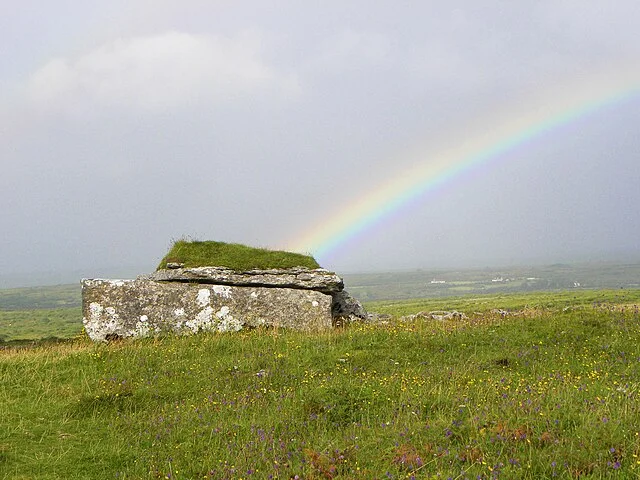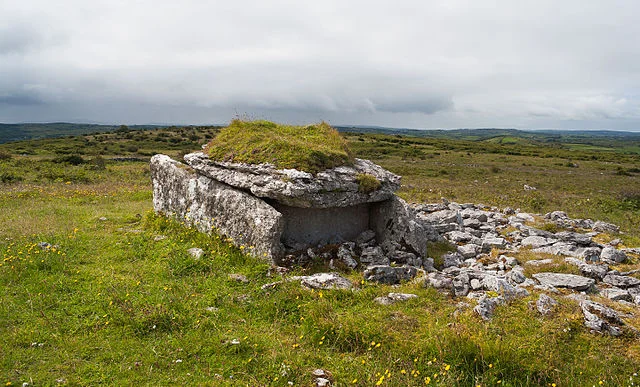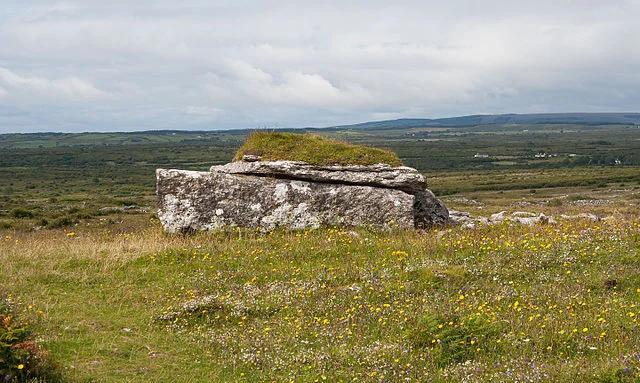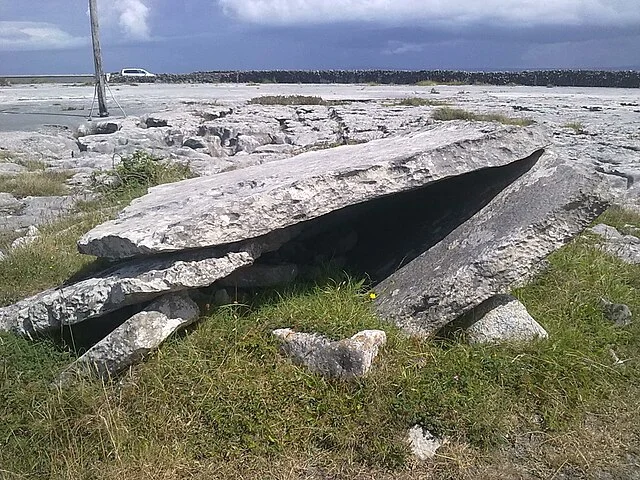Parknabinnia is a wedge-shaped tomb located in County Clare, Ireland. It dates back to the late Neolithic or early Bronze Age, around 2000–1500 BC. The tomb is one of the best-preserved examples of a wedge tomb in Ireland. It is part of a broader tradition of megalithic burial structures found across the Irish countryside.
Get your dose of History via Email
Structure and Design

The Parknabinnia tomb consists of a long, narrow chamber that tapers at one end, giving it the characteristic wedge shape. It measures about 11 meters in length and has a width of approximately 2.5 meters at its widest point. The chamber is constructed with large stones and includes a roof that once covered the structure, though much of it has collapsed over time. The tomb is surrounded by a low stone wall that once defined its periphery.
Purpose and Function

Wedge tombs, like Parknabinnia, were likely used for communal burial. Archaeological evidence suggests that these tombs were primarily used for the burial of human remains, although some tombs have also yielded artifacts such as pottery, tools, and bone fragments. These items provide valuable insights into the lives of the people who built and used the tombs.
The exact purpose of wedge tombs remains unclear, but they may have served as family or clan burial sites. Some scholars suggest that the tombs also played a role in religious or ceremonial activities. The alignment of the tombs, including Parknabinnia, often corresponds with the movement of the sun, suggesting a possible connection to solar rituals or calendrical observances.
Location and Setting

Parknabinnia is located on the southern slopes of the Slieve Bernagh Mountains, near the village of Kilbaha. The tomb is situated in a landscape that includes other megalithic structures, such as dolmens and standing stones. This concentration of prehistoric monuments suggests that the area was of significant cultural and religious importance to the communities living in the region during the Neolithic and Bronze Ages.
The site offers a panoramic view of the surrounding countryside, which may have had symbolic significance. The position of the tomb, combined with its alignment, may indicate a deliberate choice to place the tomb in a location that held spiritual or ceremonial value for its builders.
Preservation and Access

Parknabinnia has been well-preserved due to its remote location and the sturdy construction of its stone structures. Despite the collapse of some of the roof stones, the tomb remains an important example of the wedge tomb tradition. Visitors can access the site, and it remains a significant location for archaeological study and public interest.
Conclusion
Parknabinnia is a key example of the wedge tomb type, offering valuable insights into the burial practices and beliefs of Neolithic and Bronze Age communities in Ireland. Its impressive structure and strategic location highlight the importance of this site in the broader context of prehistoric Ireland. The tomb, along with other megalithic monuments in the region, continues to be a subject of research and interest, providing a window into Ireland’s ancient past.
Source:

